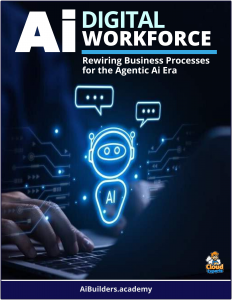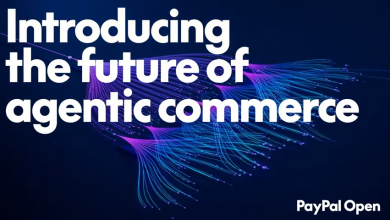 “The moment of the digital labor revolution is upon us,” Adam Evans, Salesforce’s head of AI, says.
“The moment of the digital labor revolution is upon us,” Adam Evans, Salesforce’s head of AI, says.
Speaking on Bloomberg Evans discusses scaling the technology and driving productivity.
Salesforce’s Agentic AI services, primarily through its Agentforce platform, are transforming the future of work by enabling a digital workforce that integrates autonomous AI agents with human employees to enhance productivity, efficiency, and customer satisfaction.
Agentic AI and Agentforce
Agentic AI refers to autonomous software systems that can independently reason, make decisions, and execute tasks without constant human intervention. Unlike earlier AI systems focused on predictive or generative capabilities, agentic AI combines reasoning, adaptability, and autonomy to handle complex workflows.
Salesforce’s Agentforce is a suite of customizable, autonomous AI agents integrated into the Salesforce Platform, designed to augment human workers across various business functions such as sales, service, marketing, and commerce.
Enabling a Digital Workforce
Agentforce creates a hybrid workforce where AI agents act as digital teammates, taking on routine, repetitive, and data-intensive tasks to allow human employees to focus on higher-value, strategic, and creative work. Key ways Agentforce enables this digital workforce include:
- Agentforce allows organizations to scale their workforce on demand with a few clicks, deploying AI agents to handle tasks like answering customer inquiries, qualifying sales leads, or optimizing marketing campaigns. This scalability ensures businesses can address resource constraints without hiring additional staff.
- Powered by the Atlas Reasoning Engine, Agentforce agents can analyze data, make decisions, and execute tasks autonomously, such as resolving customer service inquiries or generating personalized marketing content. For example, Salesforce’s deployment of Agentforce on its own help.salesforce.com handles 32,000 customer conversations weekly with an 83% resolution rate.
With low-code tools like Agent Builder and Model Builder, businesses can create and customize AI agents tailored to specific industries or use cases in minutes. This democratizes AI adoption, enabling non-technical users to deploy agents for diverse tasks, from retail personalization to nonprofit volunteer coordination.
Powering the Future of Work
Agentic AI services are poised to redefine organizational structures, employee roles, and workplace dynamics, marking a pivotal moment in the Fourth Industrial Revolution.
Agentforce is expected to deliver a 30% productivity gain per employee and a 19% reduction in labor costs (equivalent to $11,064 per employee based on OECD averages). By automating tasks like answering FAQs or processing refunds, agents free up human workers for high-priority tasks, such as building customer relationships.
Salesforce envisions a future where one billion agents are deployed by the end of 2025, transforming workplaces into ecosystems of human-AI collaboration. This “Third Wave of AI” builds on predictive and generative AI to create a world where agents not only assist but also negotiate, buy goods, and create new agents autonomously. Businesses that proactively adopt Agentforce will lead in efficiency, innovation, and customer success, shaping the next era of work.



